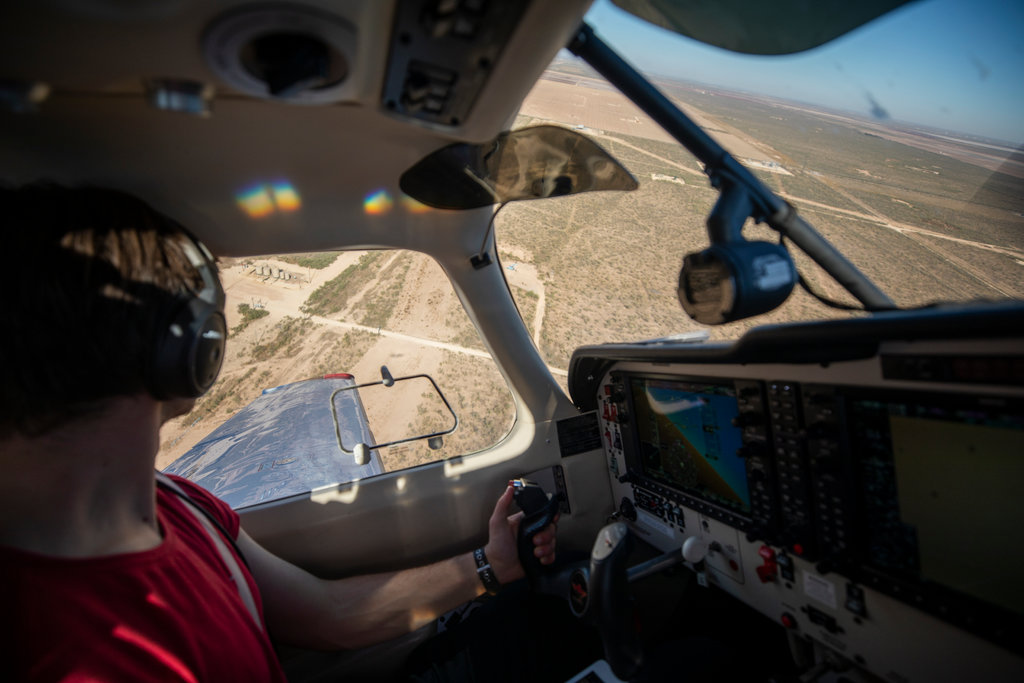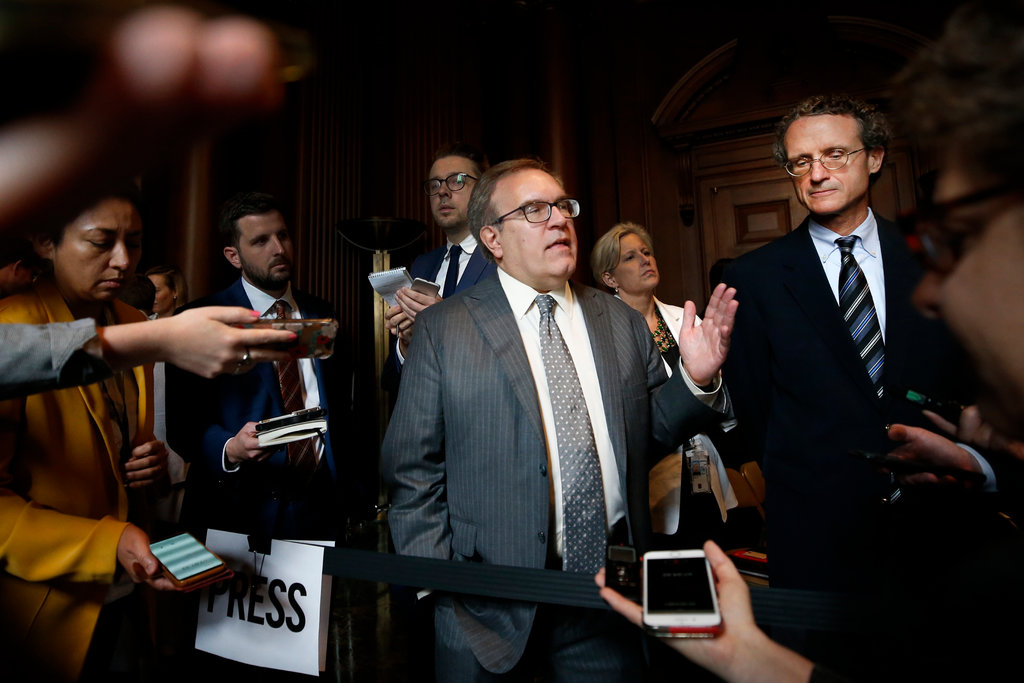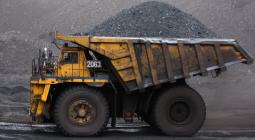It’s a Vast, Invisible Climate Menace. We Made It Visible.
Immense amounts of methane are escaping from oil and gas sites nationwide, worsening global warming, even as the Trump administration weakens restrictions on offenders.
To the naked eye, there is nothing out of the ordinary at the DCP Pegasus gas processing plant in West Texas, one of the thousands of installations in the vast Permian Basin that have transformed America into the largest oil and gas producer in the world.
But a highly specialized camera sees what the human eye cannot: a major release of methane, the main component of natural gas and a potent greenhouse gas that is helping to warm the planet at an alarming rate.
Two New York Times journalists detected this from a tiny plane, crammed with scientific equipment, circling above the oil and gas sites that dot the Permian, an oil field bigger than Kansas. In just a few hours, the plane’s instruments identified six sites with unusually high methane emissions.
Using a powerful infrared camera, The Times identified large-scale releases.
Here, methane escapes from a device meant to be burning it off.
Methane is loosely regulated, difficult to detect and rising sharply. The Times’s aerial and on-the-ground research, along with an examination of lobbying activities by the companies that own the sites, shows how the energy industry is seeking and winning looser federal regulations on methane, a major contributor to global warming.
Operators of the sites identified by The Times are among the very companies that have lobbied the Trump administration, either directly or through trade organizations, to weaken regulations on methane, a review of regulatory filings, meeting minutes and attendance logs shows. These local companies, along with oil-industry lobby groups that represent the world’s largest energy companies, are fighting rules that would force them to more aggressively fix emissions like these.
Next year, the administration could move forward with a plan that would effectively eliminate requirements that oil companies install technology to detect and fix methane leaks from oil and gas facilities. By the E.P.A.’s own calculations, the rollback would increase methane emissions by 370,000 tons through 2025, enough to power more than a million homes for a year.
In the air, Times reporters surveyed an area in and around two counties in the heart of the Permian with the help of specialists in methane detection.
“This site’s definitely leaking,” said Paolo Wilczak, a scientist and the pilot of the two-seater aircraft, as a laptop monitor hooked up to the equipment registered a blip in methane levels. “And that one, too.”
The reporters drove to the sites armed with infrared video gear that revealed methane billowing from tanks, seeping from pipes and wafting from bright flares that are designed to burn off the gas, but sometimes fail to do so completely. At one site, a worker walked directly into a methane plume unprotected.
Tim Doty, a former senior official at the Texas Commission on Environmental Quality who is trained in infrared leak detection, examined and helped analyze the findings. “That’s a crazy amount of emissions,” he said. “It takes a little bit of investigative work, but with an infrared camera, you can see it.”
When methane escapes into the air, it acts as a potent greenhouse gas.
This shed appeared to be emitting clouds of methane from all sides.
Oil and gas companies were committed to driving down emissions “while delivering affordable, reliable energy to American families,” said Howard Feldman, senior director of regulatory and scientific affairs at the American Petroleum Institute, a major industry lobby group. Its members believed that regulations should be improved, however, to provide clarity for businesses, avoid duplicating state rules and drive industry innovation, he said.
The regulatory rollback sought by the energy industry is the latest chapter in the administration’s historic effort to weaken environmental and climate regulations while waging a broad-based attack on climate science.
Scientists say that, in weakening the rules, the Trump administration underestimates methane’s global climate effects. It also disregards research that suggests methane emissions from oil and gas infrastructure are far larger than previously estimated.
The findings address the mystery behind rising levels of methane in the atmosphere. Methane levels have soared since 2007 for reasons that still aren’t fully understood. But fracking natural-gas production, which accelerated just as atmospheric methane levels jumped, is a prime suspect.
Methane leaks from oil and gas production threaten to erode the advantage that natural gas has over coal in meeting the world’s energy needs, scientists say. When burned for electricity, natural gas produces about half the carbon dioxide that coal does. But if methane is not burned off when released, it can warm the planet more than 80 times as much as carbon dioxide over a 20-year period.
Methane also contributes to ground-level ozone, which, if inhaled, can cause asthma and other health problems.
“It’s increasingly clear that fossil fuel production has dramatically increased global methane emissions,” said Robert Howarth, an earth system scientist at Cornell University and author of a study estimating that North American shale gas production may be responsible for about a third of the global increase in methane emissions over the past decade.
*watch here: The vast oil and gas fields of West Texas
A bright red-and-white plane pirouetted above the Texas scrub, banking so sharply it were as if the tiny aircraft was spinning on a wingtip. Mr. Wilczak, a pilot and flight scientist for Scientific Aviation, an aerial leak-detection company, executed tight circles above an oil installation.
Tiny tubes affixed to the wings siphoned air to a sensitive spectrometer, jammed behind the seats, capable of detecting and measuring methane. Mr. Wilczak said it takes about seven seconds for the air to pass through and register a reading on a computer balanced on the lap of the only passenger.
Detecting methane emissions is difficult work that often begins with flights like these. Oil and gas sites are not required to install round-the-clock emissions monitors, and flights are one of the ways to spot trouble.

In the course of about four hours of flying, we found at least six sites with high methane-emissions readings, ranging from about 300 pounds to almost 1,100 pounds an hour, including at DCP Pegasus, which is part owned by the energy giant Phillips 66.
Those readings would very likely put those sites in the category of “super emitters,” a term used by scientists to describe large-scale releases that are responsible for a disproportionately high share of methane emissions from oil and gas sites. In a 2017 study of the Barnett shale basin in Texas, methane releases of about 60 pounds or more an hour were classified as super emitters, making up just 1 percent of sites but accounting for nearly half of total emissions.
In an aerial survey, Times reporters found six methane “super emitters.” The gray line indicates their flight path.
On the ground, the Permian is a landscape of parched cotton fields, bobbing pump jacks and dirt roads that stretch for miles. We drove out to photograph the emissions we had detected from the air with a specialized infrared camera fitted with a lens made not of glass, but metal.
At the DCP Pegasus plant, south of Midland, the camera transformed a tranquil scene into a furnace. Hot columns of gas shot into the air. Fumes engulfed structures.
The camera sees several types of gases, including methane and ethane, both greenhouse gases, as well as pollutants called volatile organic compounds. Any emissions are likely to contain a mixture of the gases. Mr. Doty, who now runs a consultancy, said the emissions appeared to be from vapor combustors, compressors and storage tanks.
According to Texas regulatory records, DCP has reported more than 250 unpermitted emissions events this year in the Permian Basin and is among the area’s bigger emitters. State rules allow facilities to report irregular emissions without penalties.
Sarah Sandberg, a spokeswoman for DCP, which operates several pipelines and almost 50 gas processing plants nationwide, said she had “many questions regarding the accuracy of your assessment and assumptions.” She did not respond to repeated follow-ups.
Phillips 66 declined to comment.
At the EagleClaw Midstream gas processing plant just south of Pecos, we found emissions spewing from the top of a wastewater tank. The plant’s manager, Justin Bishop, walked over to look at what we were filming. “We didn’t know it was leaking,” he said.
A worker went to check on the tank, climbing some stairs and walking into the plume.
*watch the video here:A worker climbed into the plume without protection.
He said the emissions were simply water vapor. “There’s no problem,” he said. “We aren’t reporting it.”
But Mr. Doty, the former Texas emissions regulator, said water vapor would have been visible to the naked eye. “That isn’t water,” he said. “That’s a whole lot of emissions.”
In a statement, EagleClaw said its workers had discovered that the tank’s valve did require maintenance and that the problem had been fixed 30 minutes later.
“The amount of gas that leaked was determined, by our experts, to be well below any legal reportable limits,” Todd Carpenter, the company’s chief compliance officer, said in an email. He added that the safety and security of EagleClaw’s employees, and of the public, “was of primary concern.” The company has not filed an emissions event report this year.
As early as March 2017 — just months after the presidential inauguration — fossil fuel companies made contact with the Trump administration to argue for a rollback of methane emissions rules.
They held repeated meetings with federal officials, including an important one in November 2018, when lobbyists for DCP, EagleClaw and other oil processing companies met with officials from the Environmental Protection Agency to discuss a critical topic: unintended or “fugitive” methane emissions.
Representatives of the lobby group, GPA Midstream, argued that the E.P.A. should relax monitoring requirements for fugitive emissions at gathering and compressor facilities, according to regulatory records reviewed by The Times. GPA Midstream met with Trump administration officials at least three times on the matter.
“More frequent monitoring would not be cost-effective,” GPA lobbyists later said in comments filed with the agency, and stricter regulation was “costly and burdensome.”
One of these stacks is silently streaming gas into the atmosphere.
The oil industry wants looser restrictions on releases like these, which are common.
The efforts were part of a broader industry push to reverse Obama-era rules that would have forced operators to more aggressively monitor and repair natural gas leaks while reducing flaring.
Earlier, at a March 2018 meeting, lobbyists for the Independent Petroleum Association of America, which represents thousands of oil and gas companies nationwide, circulated material that forcefully rebutted the scientific evidence of large fugitive emissions from drilling sites. The lobbyists said the data “create the illusion” that super emitters pose a problem, according to a handout from the meeting.
The petroleum association vice president, Lee O. Fuller, said in an interview that for smaller operators, which often run low-producing wells, the costs of excessive regulations could be crippling. They “could put many out of business,” he said.
The companies found an administration willing to listen. Before his appointment to the post of assistant administrator at the E.P.A. overseeing air pollution, William L. Wehrum lobbied on behalf of oil and gas producers, including gas processors and petroleum refineries.

Mr. Wehrum resigned from the agency in June and is under investigation for his contacts with former clients. His former boss, Andrew Wheeler, the E.P.A. administrator, also lobbied for energy companies earlier in his career.
Do you see the methane leak billowing from this tank?
The leak, and many more, were invisible. Until we photographed them.
By this August, the E.P.A. had proposed a broad rollback, including rescinding direct regulations of methane emissions completely. Volatile organic compounds, a separate but related category of gases, would remain regulated, which would have a side effect of limiting some methane emissions.
In a statement, an E.P.A. spokesman, Michael Abboud, said methane was a valuable resource, so the industry already “has an incentive to minimize leaks.” He added that E.P.A. staff members work with ethics officials “to ensure they are in compliance with all ethics rules.” Mr. Wehrum did not respond to a request for comment.
Energy giants including BP, Exxon Mobil, Chevron and Shell have, to varying degrees, publicly supported methane regulation. However, trade associations representing all three, including the American Petroleum Institute and the Independent Petroleum Association of America, have fought against direct regulation.
A spokesman for BP said the company wanted to maintain the direct regulation of methane, and an official from Exxon said the company was making voluntary efforts to reduce methane, including infrastructure upgrades. A Chevron spokesman, Sean Comey, said the company “supports global efforts to reduce flaring and methane emissions.” Shell said it supported the continued direct regulation of methane and more frequent leak inspections.
Some companies are starting to use infrared cameras, drones and other technology to detect methane leaks. BP said recently it would use drones and surveillance cameras to monitor for fugitive emissions at new oil and gas projects. Shell is testing solar-powered technology to watch for leaks.
As the boom-and-bust oil business goes through another one of its financial gyrations — production in the Permian is expected to slow as a glut of gas and rock-bottom prices take their toll — there are concerns that investments in methane detection won’t be a priority, particularly for smaller operators.
The owner of this site has filed for bankruptcy.
We tried to alert the company to the leak. No one called back.
One site where we identified leakage with the infrared camera was an unmanned well pad with a battery of gray tanks. “There’s a lot of volume coming out of there,” Mr. Doty later said of the images. “If this is going 100 percent of the time, that’s a lot of emissions.”
The site was owned by MDC Texas Operator, which we discovered had filed for bankruptcy that very day.
Calls to the company went unanswered, and its bankruptcy lawyers didn’t return requests for comment. It is unknown whether the tank is still spewing gas.
For more climate news sign up for the Climate Fwd: newsletter or follow @NYTClimate on Twitter.
About the infrared video
To create images of methane emissions in the Permian Basin, The Times used a custom-built FLIR camera that converts infrared energy into an electronic signal to create moving pictures. The camera’s filter allows infrared wavelengths between 3.2 to 3.4 micrometers on the electromagnetic spectrum to pass through to the sensor.
To visualize gas, the camera uses helium to cool down the sensor to the temperature of liquid nitrogen, around minus 200 degrees Celsius. Unlike traditional photography lenses, which are glass, the infrared images were created using metal lenses made from germanium, which is transparent at infrared wavelengths.
*Jonah M. Kessel, a New York Times visual journalist, and Hiroko Tabuchi, a Times climate reporter, went to West Texas oilfields with a camera that can photograph methane.
The New York Times
20 January 2020




